
THIS POST MIGHT CONTAIN AFFILIATE LINKS. MY DISCLOSURE POLICY GIVES YOU MORE DETAILS.
The presence of gender stereotypes in kids' TV makes it hard for our kids to have an accurate view of the real world.
If we want to raise our kids--both boys and girls-- to live in a modern world, the media we expose them to should reflect the progressive world we live in.
It turns out, the more TV our kids watch, the more they believe that boys are better. WHAT?
Don’t we all expect our girls to have careers? Then why do only 20% of the moms in family movies have a job?*
And aren’t we all raising our girls to see themselves at the center of the world? With males speaking twice as much as females in family movies*, what message are we sending to our kids about who gets to make decisions, be in charge, and play a starring role in the world? (* This research data from the Geena Davis Institute on Gender in the Media)
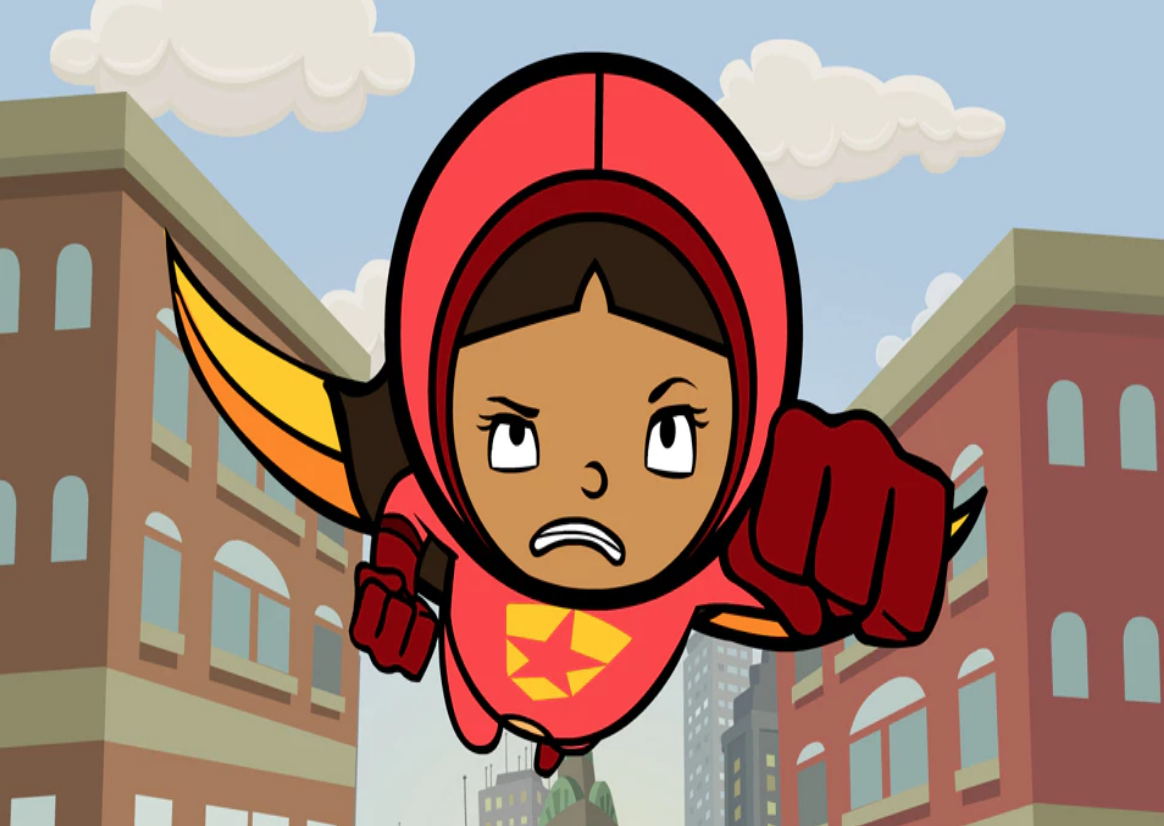
Word Girl saves the day!
I know my daughter is going to get exposed to a huge amount of information through the media. Whenever I can, I want to bust gender stereotypes, introduce her to modern-day feminist literary characters, and expose her to modern and realistic ideas about the world.
I've developed a little test for myself when looking at kids' tv and media that YOU can use too!
There are five questions in The Bossy House test for gender stereotypes in kids' tv shows.
Is there an even ratio of girls to boys?
Literally, what is the ratio of girl characters to boy characters?
Many, many shows (I can think of four right off the top of my head) have an ensemble cast of characters where one is funny, one is smart, one is dopey, and one is THE GIRL.
As in boys have a variety of personalities and being a girl is a whole personality all wrapped into one. As in “this girl is here as a fun feature in our all-boy situation.” Those shows suck. And they show our girls that they’re not central, that they are accessories in a male world. This is not only the wrong message, it is inaccurate.
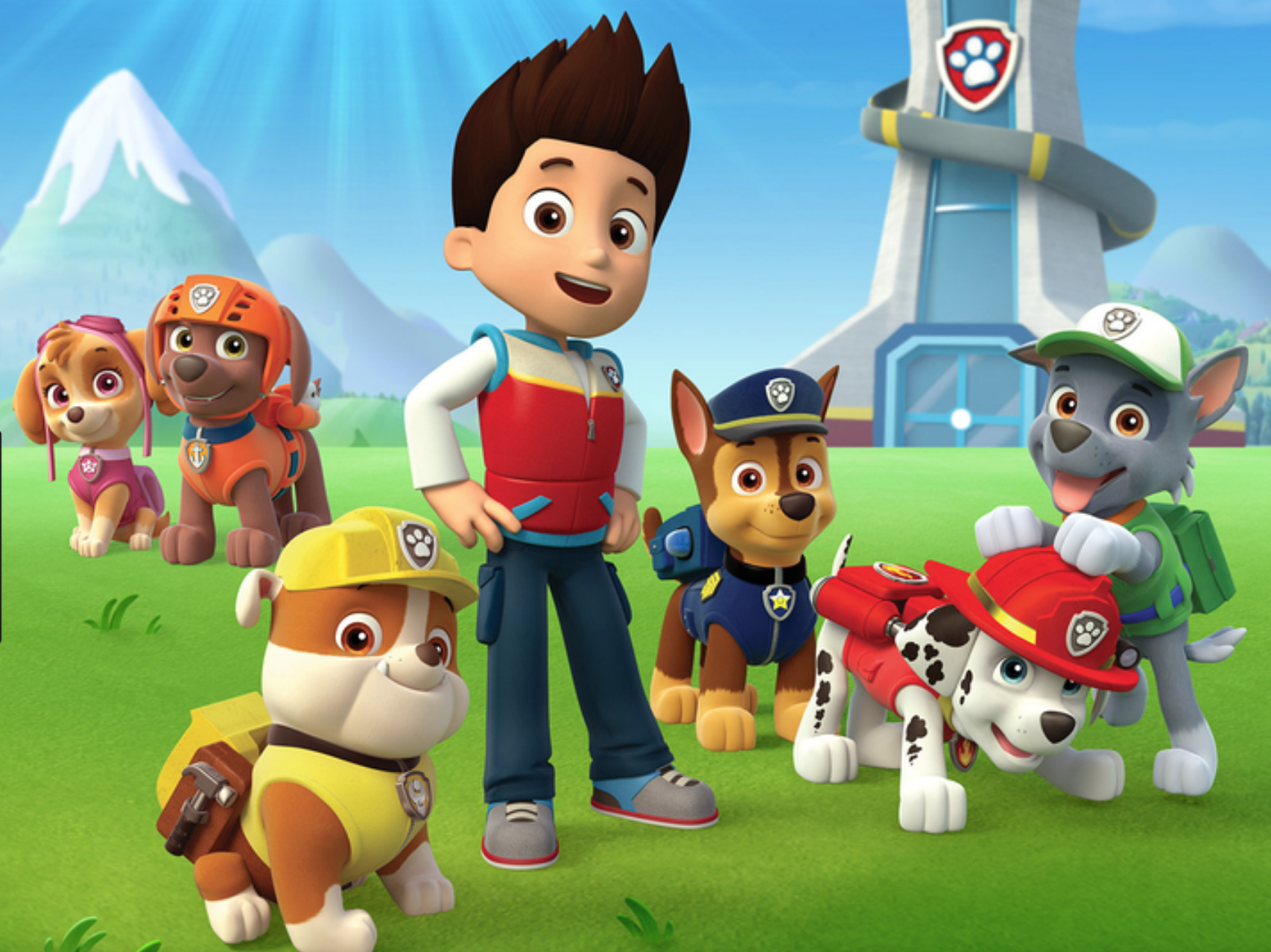
Get it together, Paw Patrol.
Does this show have a wide or narrow view of gender roles?
Do the characters in the story of both genders participate in activities outside of gender stereotypes?
If the girls in the story are always cooking and the boys are always adventuring, this is the wrong world to show our kids. And if girls are not at least 50% of the leadership, that’s an inaccurate view of the world too!
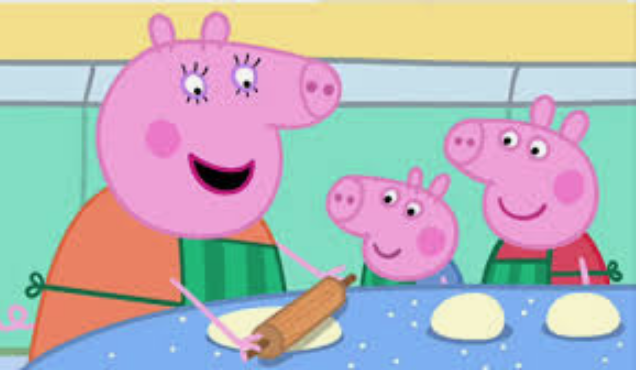
Have we ever seen Daddy Pig cook anything? And that whole trope where Daddy Pig is incompetent but super-confident and Mummy Pig makes not-so-subtle digs at him while giving in to his bullshit... well that's a gender stereotype!
In addition, kids should be exposed to gender and sexuality in all its forms. I don't believe that exposure to trans and gay characters hurts kids, and if you do, this article isn't for you.
Seeing trans and gay characters represented not only gives kids with those identities a picture of themselves, but it also gives all of us a true picture of what the world is actually like. It's full of all kinds of expressions of gender and sexuality, and to deny this fact is to shelter kids unnecessarily.
But outside of representation, I want kids to see the enormously wide definition of what it means to be a girl or a boy.
I hate labels like “tomboy” because they suggest that all girls are some kind of “feminine” and if you’re interested in “boy” things that makes you a different kind of girl with a different name. I reject that.
Any kind of way a girl wants to be is fine, whether our culture calls it masculine or feminine, whether it’s traditionally for a girl or traditionally for a boy. Whatever way a girl wants to wear her hair or her clothes is fine. Wearing your hair and your clothes a certain way does not make you a certain kind of girl, does not make you straight or gay, does not make you cis or trans.
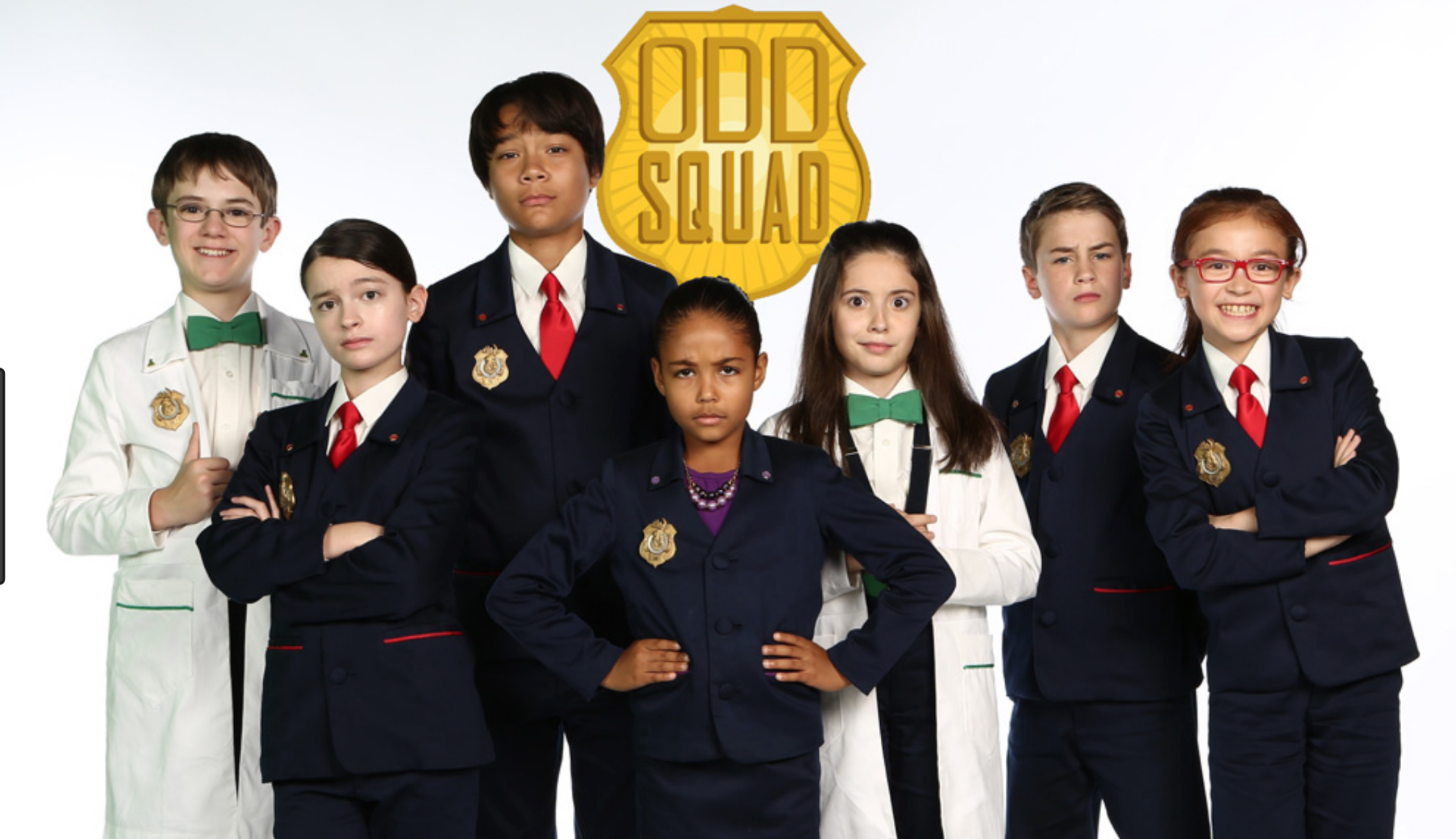
The Odd Squad does a great job representing a good variety of ways to be a girl or boy and BONUS: girls lead the way.
People get to be who they want to be and our culture would be better if a MUCH wider expression of gender was accepted. Girls and boys are put in such narrow boxes of what is expected of them that both girls and boys have an idea of jobs for their gender by age 4. Every time a girl or boy steps out of that box even well-meaning people are quick to label them trans or gay.
Over here at our house, colors, activities, toys, jobs, and hobbies know no gender.
Who takes initiative and whose ideas win?
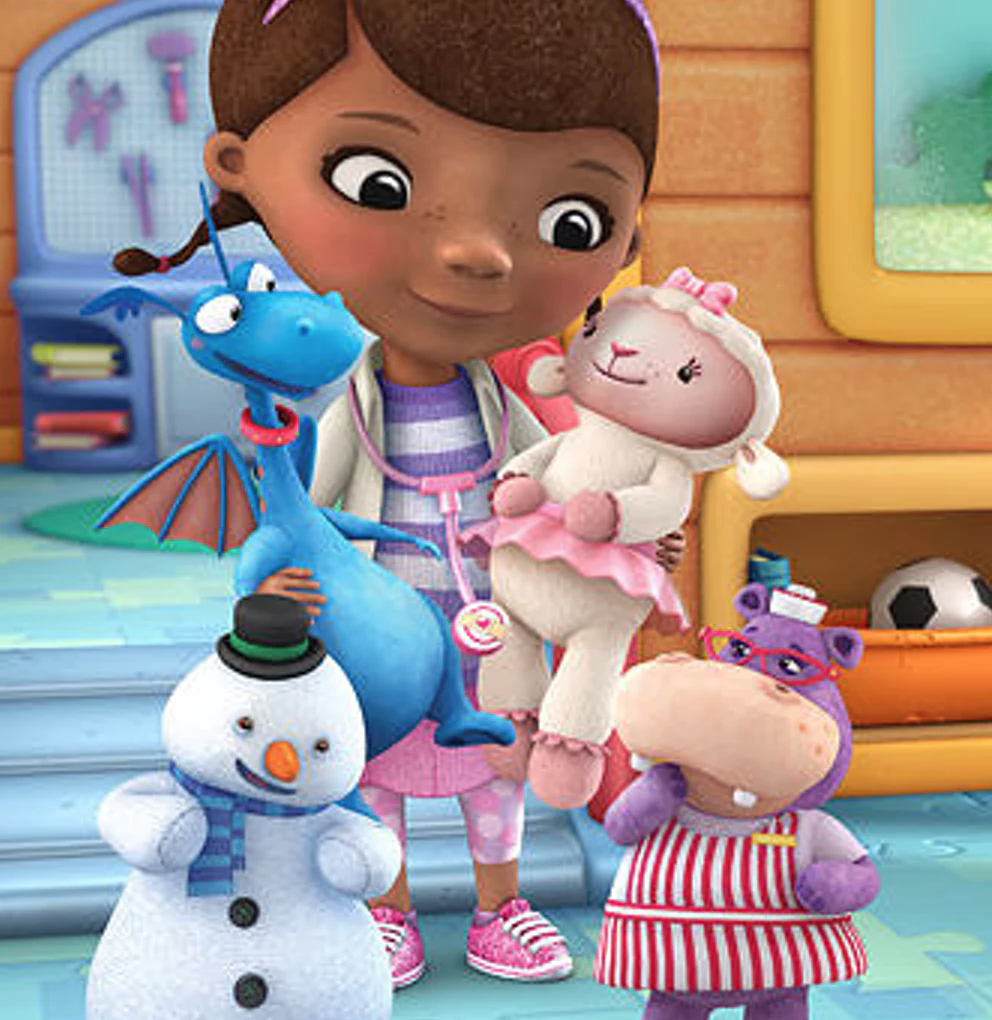
Doc takes great initiative (she created a whole hospital!) and her ideas are ALWAYS the ones that win.
Are girls asking all the questions (“What should we do????”) or are they at least 50% of the time coming up with ideas?
When the girls in the show have solutions, are these the ones that solve the problem?
It’s all very well and good if girls have ideas, but if these ideas aren’t the ones that save the day or solve the problem, we’re teaching girls that their ideas aren’t viable in a male world.
I want media that show girls solving problems AT LEAST at the same rate as the boys.
How are girls perceived?
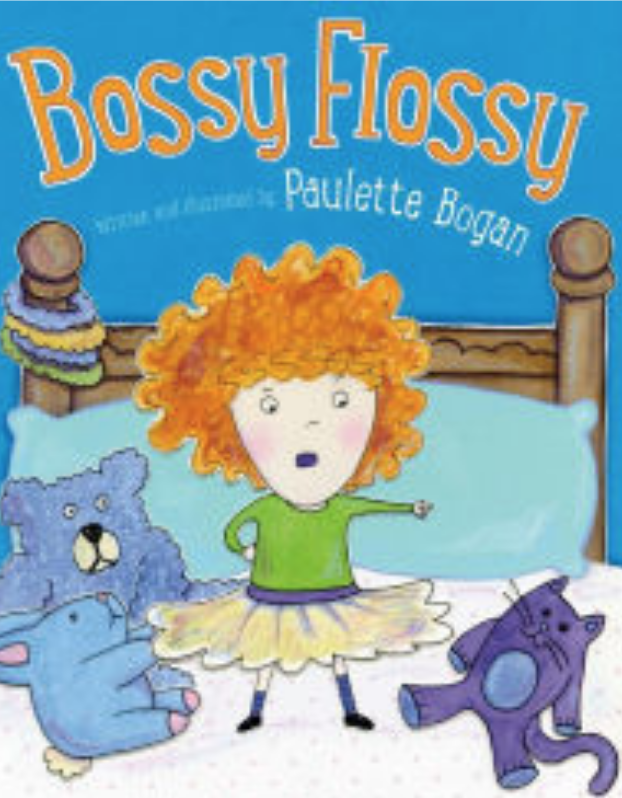
Was Flossy REALLY bossy? I have a feeling this book is "niceness training."
When girls take action, are they seen as plucky and smart or annoying and grating?
I can think of one show where the girls have ideas but are openly scoffed at for being so bossy. This is not a good show.
Being a leader, having ideas, and taking charge are POSITIVE traits, people. Even when girls do them.
What KINDS of solutions, male or female?
I know this one is going to be controversial, but hear me out.
As I said above, colors, jobs, and toys have no gender.
I also believe that there are traditionally masculine and feminine ways of having power, solving problems, and moving in the world.
Because of the way we’ve been raised, girls are taught to pay attention to others, to care for others, and to prioritize the needs of others. I think these are great ways to solve problems, but it's a double edged sword. On the one hand, girls are good at thinking about groups, prioritizing people’s needs, and cooperating. On the other hand, we sometimes do that to the detriment of ourselves.
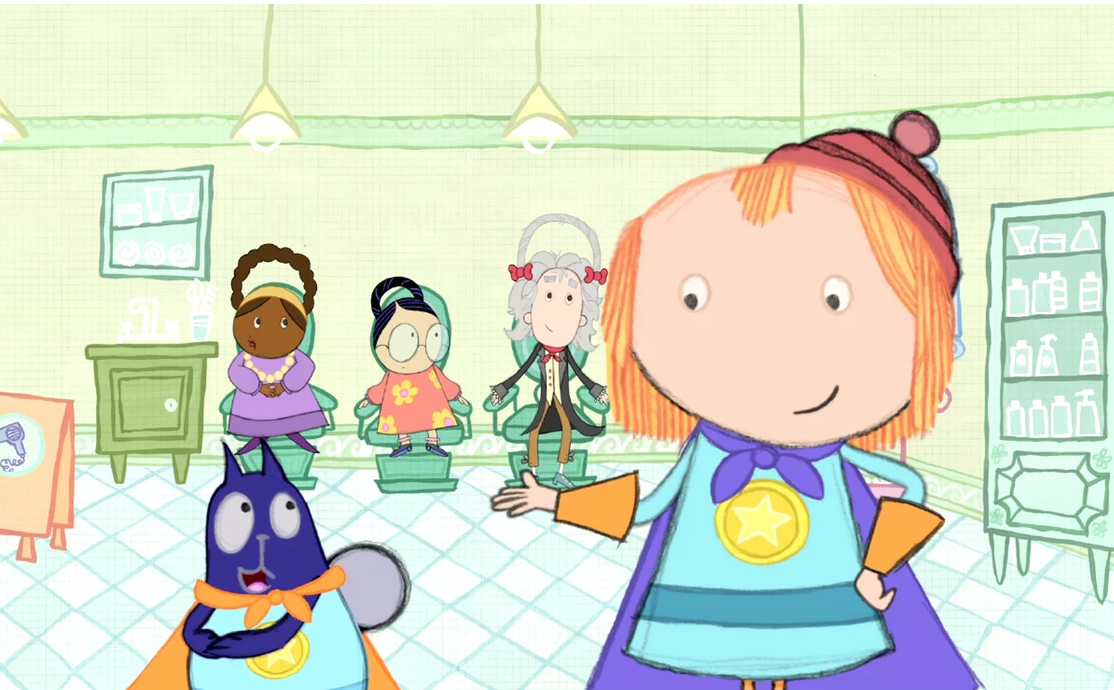
Peg's solutions are always about diving things evenly, getting information from everyone, and solving problems for the whole group. Oh, and following the laws of math.
Boys are taught to compete, to be the best, and to put themselves first. On the one hand, boys may win more, might get more of the share of the pie. On the other hand, they are more separate from each other and there are more losers when only one idea can win.
Yes, there are exceptions to this. Yes, there are girls who are taught to compete and there are boys who grew up explicitly taught (by wise moms) to nurture. But the effect of gender roles has persisted.
In a male-dominated world, I am interested in ways of solving problems that feature female-driven ideas.
In television for children, are ideas like cooperation, caring for others, and ensuring justice and fairness the ideas that solve the problems? Or is competition, being the strongest, or being the smartest the way that problems get solved?
Are people standing up for what is right and building a team, or are they tricking the villain with a smart idea that humiliates him?
This is sometimes really hard to define, but I want to honor our girls' minds and empower them to solve problems with the strengths they have.
I am interested in solutions to problems that think of everyone, make life better for others, work in cooperation, advocate for justice, and stand up to the powerful even when it takes courage.
These are the actions of female leadership, and I believe our world would be better served to have more of these kinds of solutions.
The Bossy House test helps parents
There are thousands of potential shows out there for kids, and let's face it moms, we're not supervising every minute. Identifying gender stereotypes in kids' tv can take a lot of work.
You can use this quick test as a cheat sheet to help you choose which media to expose your kids to without having to watch hours of Paw Patrol. (Newsflash: Paw Patrol is trash).
And here's a little favor: I haven't reviewed that many shows yet because, well, life is busy. But you can help me out! Use this test on the shows YOU HAVE ALREADY wasted hours watching, and post your grades in the comments. Shows that get at least a 4 out of 5 are winners, in my book!
In the meantime, you can either read the comments below or check out the Common Sense Media reviews of their 25 movies that defy gender stereotypes.
So here's my disclaimer: I care about a whole host of other things besides gender too.
I want there to be racial representation across all the media my child sees. I want children of color to be figured in situations that aren’t rife with stereotypes, and I don’t want my daughter reading EVEN ONE BOOK where the lives of wealthy children are the norm. The casual classism of children raised by nannies, households with cooks and maids, and women without jobs are not an accurate picture of the world we live in and make exploitation seem normal.
The prevalence of villains portrayed as gay characters hurts kids, as does the absence of anyone with a disability or intellectual difference. It’s not easy finding great kids’ media that ticks ALL the boxes, but we can try and we can ask for better.
But in particular, these five categories examine gender. With these categories in mind, I’m looking at children’s tv shows for how well they give a realistic and empowering view of the world to both boys and girls as it relates to gender.
First UP: The Bossy House Reviews The Care Bears
I watched hundreds of hours of the Care Bears so you didn't have to. You're welcome.
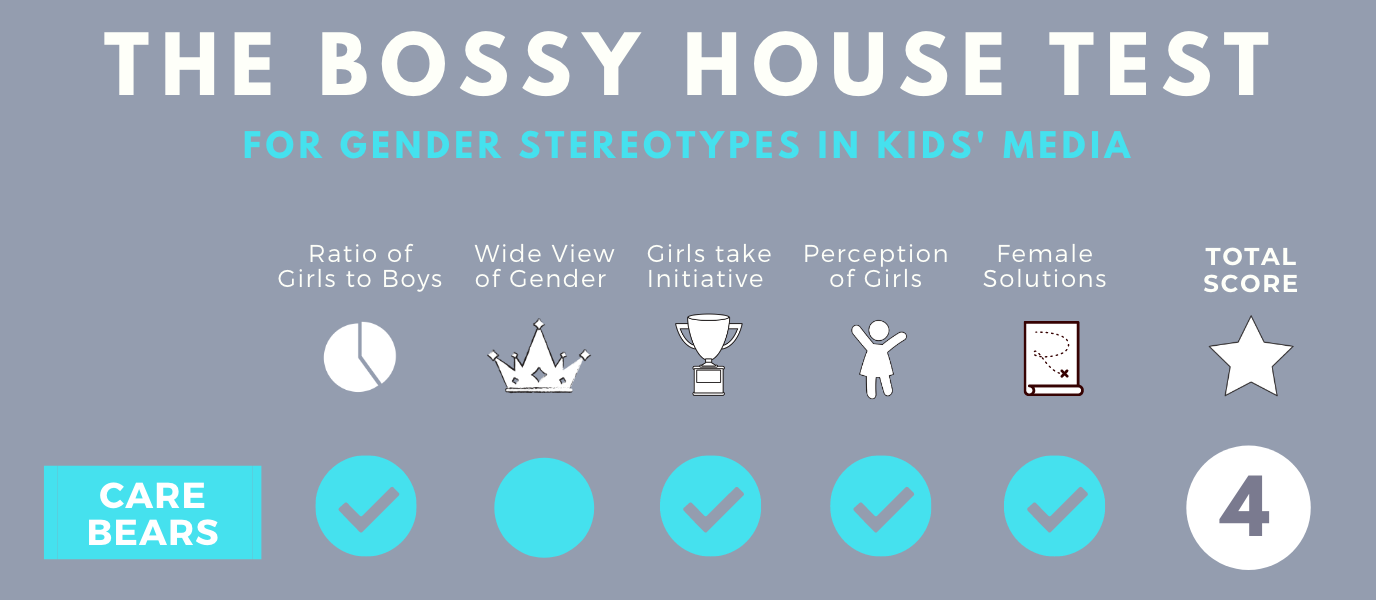
Ratio of Boys to Girls
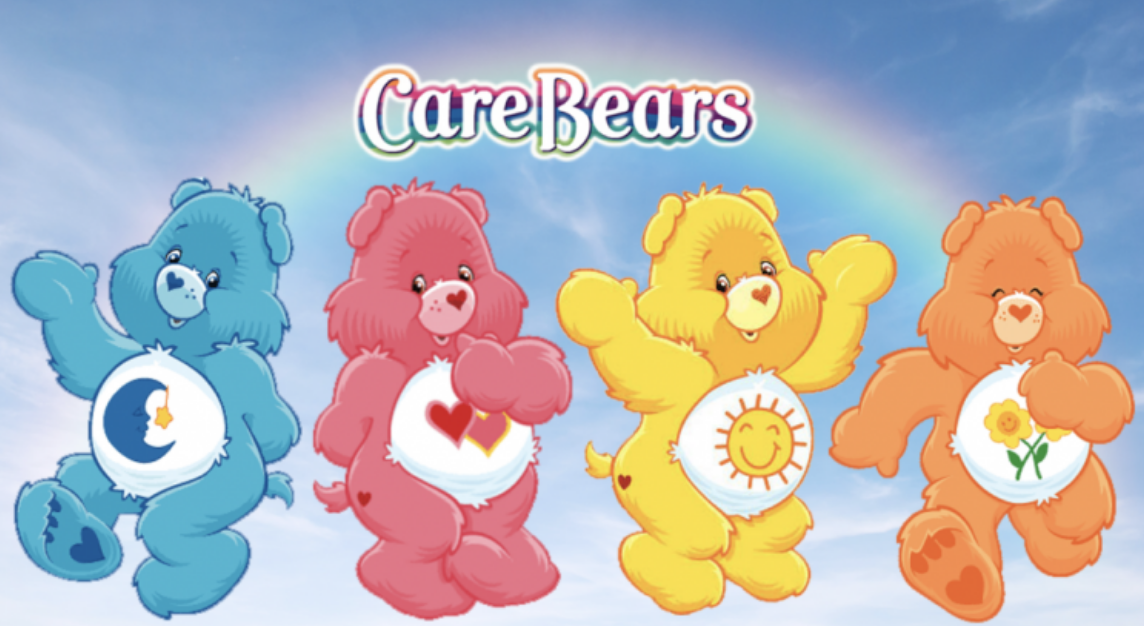
Boys, girls, who knows?
In the Welcome to Care-a-Lot series from 2012 which is the one you’d most likely see on Netflix, the ratio is pretty good. There are 12 main recurring Care Bears, 7 female and 5 male.
Some have noted that several Care Bears have changed genders over the years, which seems sort of par for the course with this group of ambiguous looking and acting bears.
Wide or narrow view of gender roles?
All the Care Bears LOOK the same: there is not one thing that indicates gender in color or body shape. The only thing that might make you think a Care Bear is male is a deeper voice, but a lot of times I can’t even tell which is which (and I have watched a fair amount of this show).
Aside from the ambiguous gender definition, there’s a pretty neutral view of gender roles.
All the bears engage in activities like caring for others and working together, and there are virtually no traditional gender stereotypes. You know, everyone plans the parties and bakes the cupcakes.
I wouldn’t say that its view of gender roles is incredibly wide, though. The main leader of the group is male and the main villain is male, so they get a lot of airtime.
In addition, the male characters are Grumpy, Funshine, and Tenderheart (the leader). (There’s also Bedtime and Good Luck). But the first three are the gruff, adventurous, and in-charge characters. For my taste, I would have liked the adventurous one to at least be female.
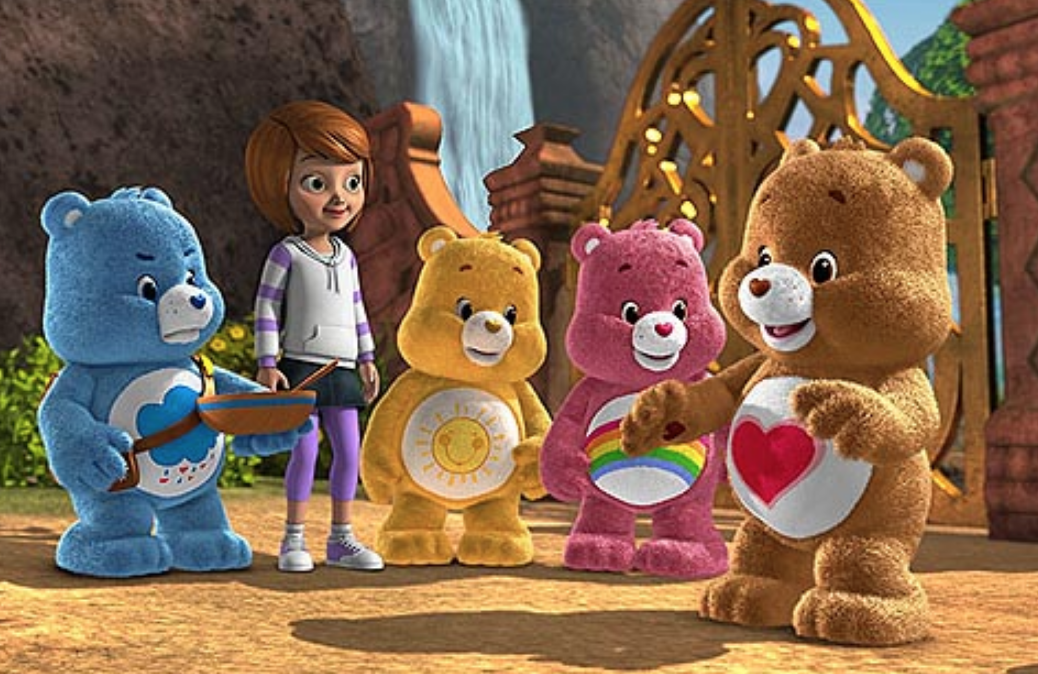
Tenderheart leading the way.
The female characters are Harmony, Love a Lot, Cheer, Share, Wish, Friend, and Wonderheart. That’s a lot of sharing and getting along compared to the male characters. This did not get a check for wide view of gender roles for this reason.
But overall, this is subtle because the female characters are so pervasive and have such an influence over the story lines.
Who takes initiative? Whose Ideas win?
Though Tenderheart arrives to assign jobs every once in a while, all the bears have their chance to take initiative on what seems like a rotating basis.
In terms of whose ideas win, it looks like equal opportunity to me.
How are girls perceived?
Male and female characters are perceived similarly, except for this one issue:
The most annoying feature of the Care Bears show is that every third show one of the characters (and not the male characters) has a meltdown because they cared too much and forgot about themselves.
Maybe it’s teaching kids the importance of self-care, maybe it feels like martyrdom. I don’t know. This category still got a check.
What kinds of solutions are used, male or female?
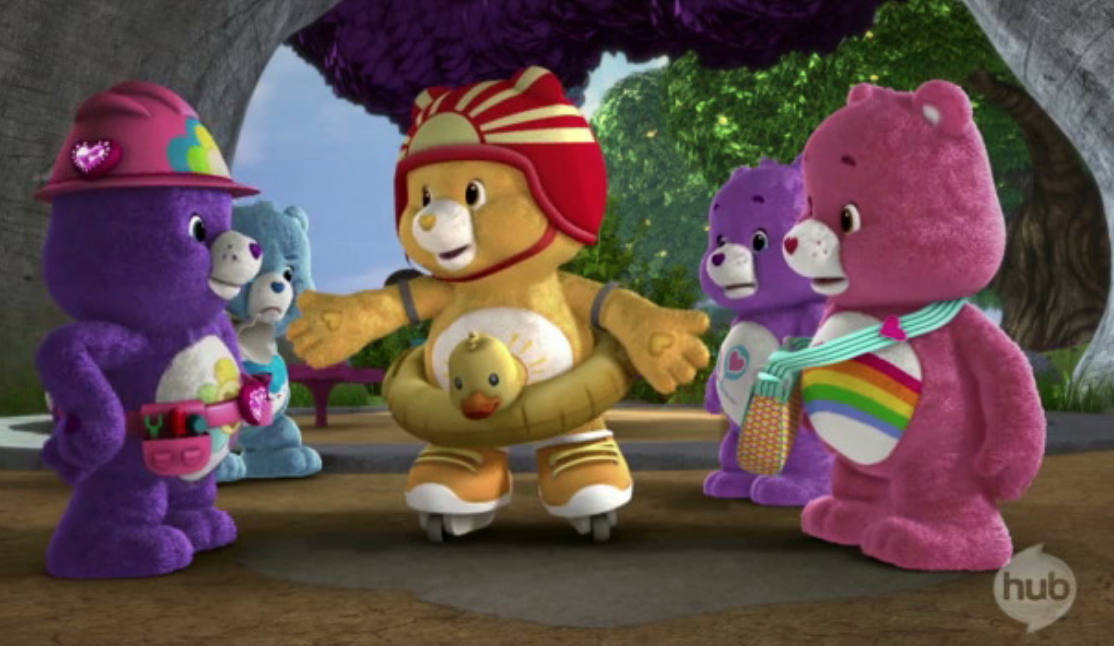
Just another solution that involves sharing with everyone or including everyone.
Female solutions win every time on this show. Not only does caring for your friends ALWAYS work to save the day, but more often than not, the solution to the problem requires the bears to care for their enemy too.
Bonus female points: the villain always confesses and cites a reason they were so selfish or mean. It’s always early trauma. ALWAYS. “My dad was mean to me so I was mean,” or “My feelings were hurt so I stole your bunny.” Forgiveness and healing abound.
There you are, my friends, my first review. Don't forget to review your own shows in the comments! SOMEONE, please do PJ Masks so I don't have to do the research.


